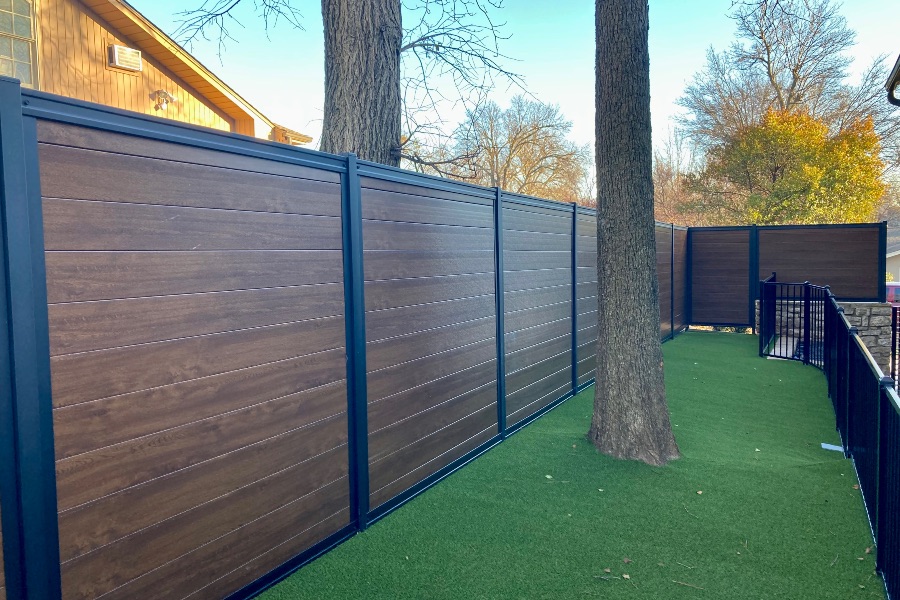All Categories
Featured

As sustainability ends up being a priority for services and property owners alike, the need for environmentally friendly products, consisting of fence products, has actually increased. Conventional secure fencing options such as vinyl, wood, and steel can have negative environmental influences, yet there are now a number of eco-conscious alternatives to think about. Choosing environmentally friendly secure fencing materials not only helps in reducing your carbon footprint however additionally adds to a more all-natural and lasting setting.
- Bamboo Fencing. Bamboo is one of the most environment-friendly fencing alternatives available. Unlike typical woods, bamboo can be collected in a few years and regrows quickly, making it a lasting choice for secure fencing.
Perks: Bamboo is fast-growing, lightweight, and lasting. It requires less fertilizers and chemicals contrasted to other plants, making it a low-maintenance choice. Factors to consider: While bamboo is long lasting, it might require regular maintenance to secure it from weathering and natural wear. It can additionally be prone to cracking in cooler environments. 2. Recycled Materials. Fences made from recycled materials are coming to be increasingly preferred as an environment-friendly option. These fencings are made from post-consumer plastic, reclaimed timber, and various other recycled materials, keeping waste out of landfills. Making use of recycled materials reduces the need for new raw resources, decreasing environmental degradation.

Conveniences: These fencings assist lower waste and save natural sources. They are also usually low-maintenance and lasting. Considerations: While recycled fencings can be long lasting, the aesthetics might not always match traditional fence options. Nonetheless, several layouts are now available that mimic the look of wood or stone. 3. Composite Fencing. Compound fence is made from a blend of recycled wood fibers and plastic, offering the look of timber without the environmental impact. Several composite fences are made from recycled web content, more improving their environmentally friendly standing. These fences are lasting, require marginal upkeep, and do not need to be treated with unsafe chemicals like typical timber fencings.
Advantages: Compound fencings are resilient, immune to rot, and need little maintenance. They additionally provide a comparable aesthetic to timber without logging problems. Factors to consider: While they are low-maintenance, composite fences might be more costly than conventional timber or plastic options. The production process can likewise be energy-intensive. 4. Cedar and Redwood Fence. Cedar and redwood are natural timber materials that are typically considered more environment-friendly contrasted to various other hardwoods. These kinds of timber are normally immune to degeneration, insects, and dampness, which decreases the requirement for chemical therapies. In addition, these trees are grown in lasting woodlands, ensuring that they are collected responsibly.
Benefits: Cedar and redwood are both long lasting and naturally lovely products. They offer all-natural resistance to bugs and rot, which helps decrease the need for chemical therapies. Factors to consider: These woods can be much more expensive than various other alternatives. They additionally need occasional upkeep, such as discoloring or securing, to guarantee durability. 5. Living Fences (Hedges and Bushes) Living fences, made from trees, bushes, or hedges, are an environment-friendly option that also supplies all-natural privacy and aesthetic appeal. Plants such as privet, boxwood, bamboo, and arborvitae are generally used for creating dense, environment-friendly fences. These living obstacles aid with noise reduction, boost air quality, and supply environment for local wildlife.
Advantages: Living fences promote biodiversity, enhance air high quality, and enhance the visual charm of your building. They also soak up carbon dioxide and add to a greener environment. Factors to consider: Living fences require maintenance, such as pruning and watering, to guarantee they grow effectively. They might not provide the exact same degree of protection as traditional fencing products. 6. Stone and Reclaimed Block Fence. Rock and redeemed block fences are one more environment-friendly option. These materials are durable, need minimal upkeep, and have a lengthy lifespan. When reclaimed from old structures or structures, they help in reducing the requirement for new materials and prevent waste from getting in garbage dumps.
Conveniences: Rock and brick are resilient, weather-resistant, and offer a classic, timeless aesthetic. Recovered materials likewise have a minimal environmental impact. Considerations: The installment of stone and block fencings can be labor-intensive, and the products may be extra pricey than other choices. The long-lasting sturdiness and low upkeep costs can make them a beneficial financial investment. Verdict. Picking an environmentally friendly secure fencing product is a clever way to reduce your environmental impact while enhancing your building's privacy and aesthetic charm. Bamboo, recycled materials, composite secure fencing, and living fencings all use sustainable options that lower waste, save sources, and advertise a greener lifestyle.
By selecting among these environmentally friendly secure fencing options, you add to the defense of the environment while developing a stunning, functional outdoor room. The best product will certainly depend upon your choices, climate, and the degree of upkeep you're willing to give, yet felt confident that there are various eco-conscious options that align with your lasting lifestyle.
Latest Posts
Why Regular Vehicle Maintenance at Montclare Auto Repair Keeps Your Wallet Happy
Published May 27, 25
1 min read
Professional Residential Roof Covering Solutions You Can Depend On
Published May 26, 25
1 min read
Picking the Right Roof Covering Color: Influence On Energy Effectiveness
Published May 24, 25
1 min read
More
Latest Posts
Why Regular Vehicle Maintenance at Montclare Auto Repair Keeps Your Wallet Happy
Published May 27, 25
1 min read
Professional Residential Roof Covering Solutions You Can Depend On
Published May 26, 25
1 min read
Picking the Right Roof Covering Color: Influence On Energy Effectiveness
Published May 24, 25
1 min read